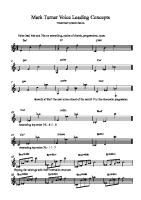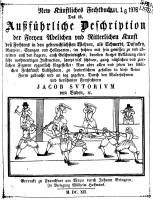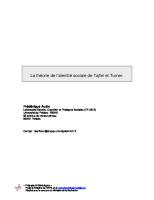Turner BrecciaComplexes Sept2011 [PDF]
S.J. Turner April, 2003 Updated: Sept, 2011 DEFINITIONS * a ‘diatreme’ breccia is the vent zone of a maar-type or hydr
38 8 5MB
Papiere empfehlen
![Turner BrecciaComplexes Sept2011 [PDF]](https://vdoc.tips/img/200x200/turner-brecciacomplexes-sept2011.jpg)
- Author / Uploaded
- sergioriveros7249
Datei wird geladen, bitte warten...
Zitiervorschau
S.J. Turner April, 2003 Updated: Sept, 2011
DEFINITIONS * a ‘diatreme’ breccia is the vent zone of a maar-type or hydromagmatic volcanism, and results from a phreatomagmatic eruption. * a phreatomagmatic breccia MUST have evidence for a juvenile magmatic component = juvenile clasts and matrix. * a phreatic or hydrothermal breccia is formed by over-pressured fluids but with no direct magmatic component.
* phreatomagmatic and phreatic breccias commonly occur within the same breccia complex.
Relationship of Mineralization to Breccia Complexes • the formation of breccia complexes is simply a highly effective PROCESS for mineralization; as a fluid conduit, as a mechanism to fracture and brecciate surrounding rocks, and as a focussed zone of pressure and temperature gradients, and fluid mixing. • the presence of a breccia complex (diatreme) is not necessarily an indication of a mineralized system. Many, maybe even most, phreatomagmatic breccias are not associated with any mineralization. Similarly, many mineralized breccia complexes may not have significant or economic mineralization. • Vicuña (Chile/Argentina), La Carolina (Argentina) and (Bald Mountain, Australia) are examples of weakly mineralized breccia complexes. There are many others.
Major Deposits Associated with Breccia Complexes Deposit
Endowment (MM oz Au) Yanacocha Complex, Peru +41 Pierina, Peru 8 Pascua / Lama, Chile 22.9 Veladero, Argentina 20 Pueblo Viejo, Dominican Republic 36.6
Deposit Type high-sulfidation high-sulfidation high-sulfidation high-sulfidation high-sulfidation
5.8 13 27
carbonate - base metal - Au
Sari Gunay, Iran
+3
epithermal, disseminated
Cripple Creek, USA Rattlesnake Hills, Wyoming
28 ~2
alkalic
Kelian, Indonesia Rosia Montana, Romania Penasquito, Mexico Camino Rojo, Mexico
carbonate - base metal – Au carbonate - base metal – Au
alkalic
NOTE : endowment includes past production / reserves and resource
Formation of Phreatomagmatic Breccias • phreatomagmatic breccias form where a rising magma intersects an aquifer at a sufficiently shallow level to erupt. • an eruption will occur ONLY when Pfluid > Plithostatic, which is at quite shallow levels (. • the diatreme grows by ‘drilling’ downward with time, due to a decreased Plithostatic directly over the breccia column (eg Valley of Ten Thousand Smokes, Alaska). • the diatreme will continue to form as long as there is a continuing (periodic) supply of magma and continued input of shallow meteoric water. • if the magma supply shuts off then the diatreme becomes quiescent and watersaturated until the next magma pulse.
• if the meteoric water supply is exhausted then the magma will continue to rise in the breccia column or margins as dikes or domes, which explains the common association of diatremes and flow dome fields.
The Setting of Breccia Pipes
from Corbett, 2003; The Ishihara Symposium: Granites and Associated Metallogenesis
The Setting of Breccia Pipes
from Corbett, The Ishihara Symposium: Granites and Associated Metallogenesis
Textures and Characteristics of Phreatomagmatic Breccias * rock flour matrix * presence of ‘basement’ clasts * accretionary lapilli * funnel-shape with upward / outward flaring margin * polymictic; including multi-stage breccias * altered / mineralized clasts eg. vuggy silica * tuff ring (if preserved) * slump blocks of tuff ring material * bedded fallback breccias * interbedded lacustrine sediments and eruption breccias * matrix to clast-support * milling and fluidized matrices * reaction rims on juvenile clasts * ‘hypogene exfoliation’ of juvenile clasts * deformed / very irregular-shaped, ‘wispy-textured’ juvenile clasts * clay overprint by magmatic volatiles * intruded by endogenous / exogenous domes and dikes * peripheral fracturing and crackle-type brecciation in competent units * peripheral hydrothermal breccia and pebble dikes
Textures: Juvenile Clasts La Zanja, PERU
Unmineralized quartz tourmaline altered diatreme breccia with slightly deformed juvenile clasts and strong reaction rims in clasts and in the matrix.
Textures: Juvenile Clasts Sapucai, PARAGUAY alkalic gold prospect
Deformed, basaltic juvenile clasts with chilled, reaction margins in k-feldspar altered phreatomagmatic breccia.
Textures: Juvenile Clasts Santa Barbara, Puno, PERU Weakly clay altered phreatomagmatic breccia with chilled margins on basaltic juvenile clasts.
Textures: Juvenile Clasts Martabe, INDONESIA wispy-textured dacitic clasts : juvenile component of clay-altered phreatomagmatic breccia
Kelian, INDONESIA wispy-textured juvenile quartz - porphyry clasts in clay-altered, polymict phreatomagmatic breccia
Textures: Clasts Ladolam, Lihir Island, PNG Breccia facies of the Ladolam alkalic epithermal gold deposit, Lihir Island, Papua New Guinea Jacqueline Blackwell, Jocelyn McPhie, David R. Cooke, John Robinson
Accretionary lapilli
Vein clasts Juvenile clasts ? 1 cm Lienetz Pit
2007 JCU Breccia Symposium
Martabe, Indonesia Clast with accretionary lapilli in clay-pyrite altered, unmineralized diatreme breccia
Textures: Juvenile Clasts Carachugo Sur, Yanacocha, PERU
Argillized phreatomagmatic breccia (barren) with basement shale clasts in the Carachugo Norte pit.
Diatremes: Internal Textures
Pascua, Chile Mineralized diatreme breccia: alunite-pyrite-enargite ore
Yanacocha, Peru Hypogene exfoliation of large juvenile clast of argillized dacitic porphyry in diatreme = rapid depressurization.
Diatremes: Internal Textures
Martabe, Indonesia Fluidized matrix to diatreme breccia with altered clasts and pyritic margin to clasts
Minaspata, PERU Alunite – clay – silica altered phreatomagmatic breccia (barren)
Diatremes: Marginal Features
Yanacocha, Peru Pascua, Chile slump block of bedded breccias and ‘APE’ Au-Ag mineralization in tuffaceous units on margin of diatreme crackle-brecciated granite breccia. marginal to the Pascua diatreme
Diatremes: Marginal Features
Yanacocha, Peru Crackle-brecciation in silicified margin to a diatreme breccia.
Bald Mountain, Queensland, Australia Silica-hematite-altered cracklebrecciated competent quartzite unit on the diatreme margin.
Diatremes: Marginal Features
IS epithermal veins in cone fractures around the margin of the Santa Barbara diatreme breccia, Peru (Wasteneys, 1990)
Diatremes: Upper Facies
Pyritic, carbonized wood fragment in lacustrine beds over breccia.
Upper facies in a maar diatreme breccia at Wau, PNG, including slide blocks along lowangle detachment faults, deformed lacustrine beds, hydrothermal eruption breccias, tuff rings, shallow hotsprings-style alteration with gold mineralization and endogenous domes (Sillitoe, 1984).
Bedded hydrothermal eruption breccias.
Diatreme Breccias: Upper Facies Bald Mountain, Queensland, Australia
Lake infilling diatreme crater
Breccia dikes marginal to a diatreme
Marginal interleaved breccias and altered PE schist.
Diatremes: Eruption Breccias / Tuff Ring
Pascua, Chile Unmineralized, steam-heated silica alteration in bedded eruption breccias above deposit.
Pascua, Chile Unmineralized eruption breccia with native S + cinnabar.
Diatremes: Eruption Breccias / Tuff Ring
Minaspata, Peru Bedded eruption breccias
Diatreme Breccias: gold (silver, base metal) mineralization Mineralization may occur within different trap-sites around and within diatreme breccias: • within permeable facies within the breccia, typically where meteoric water influx was insufficient to alter the breccia matrix to clays eg. Pascua. • within crackle-brecciated competent units around the margins of the diatreme eg. Yanacocha • in fractured competent units within the breccia columns such as dikes and domes eg. Rosia Montana.
• in permeable breccia facies below the flared out margin of a flow dome eg. Yanacocha • in breccia zones below and between slide blocks of relatively impermeable wallrocks eg. Peñasquito and Rattlesnake Hills • in well-defined epithermal veins radial or concentric outwards of the breccia margins eg. Santa Barbera in Peru. • mineralized clasts may signify the presence of deeper porphyry and skarn mineralization eg. Lepanto / Far South East in the Philippines and Rinti in Indonesia.
Diatreme Breccias: gold (silver, base metal) mineralization Pascua, Chile The highly acidic alunite – pyrite – enargite ore within the Pascua diatreme indicates that this mineralization was dominated by magmatic fluids, with virtually no meteoric component. Competent (granitic) wall rocks are also fractured and mineralized. The lack of meteoric water limited clay formation which enhanced the permeability of the diatreme breccia column.
Diatreme Breccias: gold (silver, base metal) mineralization Yanacocha, Peru Most of the diatreme breccias at Yanacocha are clay-altered due to the influx of large volumes of meteoric water following the cessation of magmatism, which caused the breccias to become relatively impermeability and therefore barren. Gold mineralization is hosted within intensely fractured, competent massive silica around the margins of the diatreme. Weaker mineralization is hosted in less competent alteration such as alunite – pyrophyllite – clay – silica.
Diatreme Breccias: gold (silver, base metal) mineralization Rosia Montana, Romania A second stage phreatic breccia , termed the ‘Black Breccia’, between two dacitic domes, is thought to be responsible for extensive fracturing and mineralization of the relatively competent intrusive rocks within a larger clay-altered, and mostly barren diatreme breccia.
Diatreme Breccias: gold (silver, base metal) mineralization Rattlesnake Hills, Wyoming Gold mineralization focused on the margin of a diatreme breccia where slide blocks of Precambrian schist have partially slid back into the breccia and blocked upwards fluid flow on the margins of the breccia column.
Diatreme Breccias: gold (silver, base metal) mineralization 3600m
Corimayo, Yanacocha, Peru 3400m
3200m
70m 16 g/t
High-grade gold mineralization (eg 70 m @ 16 g/t Au) hosted in massive silica trapped below less permeable, clay and alunite-silicaclay altered flow dome rocks. This mineralization was blind below clay altered and unaltered barren rocks.
Diatreme Breccias: gold (silver, base metal) mineralization low-angle faulting
felsic dome
Kelian, Indonesia Carbonate-base metal – gold mineralization hosted in diatreme breccia with fluid flow focussed along low-angle ‘detachment’ faults which formed large-scale slump blocks sliding back into the breccia column.
Diatreme Breccias: gold (silver, base metal) mineralization 300 200 100
30 20 10
Soil-Au ppb ( ) Soil-Cu ppm ( )
B
B’
Zone of abundant mineralizedfragments
m RL 600
0M
300
m RL 600
V V
V
500
V
V V 400
V
V V
500
V
V
V V
V V
V V
V
V V
300
V V
V V
V
V
V
V
V V
V
V
V
V
V V
V
V
V V
V
V
V
200
400
V V
V V
V
V V
300 V
V 200
V
100
100
Diatreme Breccia
Unaltered
Chlorite-magnetite
Dacite Porphyry
Illite Clay
Biotite-magnetite
TonalitePorphyry
Chlorite - Epidote
Fault
Andesite Volcanics
Pyrophyllite-Alunite
Clast of Chalcopyrite -Bornite mineralized Tonalite
0
V
High Sulfidation Silica
Proposed Drill Hole
Rinti, Indonesia: mineralized porphyry clasts within diatreme breccia. The porphyry remains undrilled.
0
#
Gold in Soils
# #
# #
#
GERHANA
# #
#
Diatreme Breccias: Geochemical Response
#
# ## # #
# #
#
KEJORA
# #
# ## #
#
#
# # # # ## #
## # # #
BASKARA
# #
#
#
# # # ## # # ## # # # ### # # ## ## ####### ###### # ## # #### ## # # ### ### # # ## # # # # # ## # ### # # ### # # # # # # # #
PURNAMA #
#
#
#
PELANGI
# # # #
> 300 ppb 100 ppb < 10 ppb 0
1 km
### #
# #
# #
#
Gold-in-soils geochemistry showing the principal gold mineralization focused in competent silica-altered rocks around the SW margin of the Purnama diatreme breccia. The diatreme is clay-altered and barren with a late-mineral, weakly altered felsic dome.
Diatreme Breccias: Geochemical Response
A’
West Rinti, Indonesia: gold-in-soil response within competent silicified rocks around a diatreme breccia. 0.8
Diatreme Breccia
ppb Au 0.4
PRD-03 0
500
1000
PRD-08 PRD-04 PRD-05 PRD-06
Proposed Drill Hole
PRD-07 PRD-02 PRD-01
Core Holes Y2000
12/7/2011
0
1 Km
Diatreme Breccias: Geophysical Response Peñasquito, Mexico
RTP ground magnetics Residual Bouguer Gravity
CSAMT:1500 m inverted resistivity
The Peñasquito diatreme breccias have are characterized by distinct gravity lows within a broader gravity and magnetic high. The magnetic and gravity data were assessed as good quality, the CSAMT conductivity data are dubious.
E-W tensor IP for Breccia Azul
Important Factors (1) • in many districts diatreme breccias were mapped as conglomerates or volcanic
breccias in the early stages of exploration eg. Veladero in Argentina, Rosia Montana in Romania. • in many cases diatreme breccias are barren due to the presence of relatively impermeable clays. This clay alteration also causes recessive weathering. • competent rock units on the margin of diatreme breccias are highly favorable targets. • upper parts of diatremes (maar volcanoes) are very complex
• lower parts of diatreme breccia may be invaded by felsic intrusions (porphyries), which may also be mineralized eg. Peñasquito in Mexico, Spring Valley in Nevada and Yanacocha in Peru. • the presence of pervasive crackle-type brecciation, arcute hydrothermal breccia dikes, bedded eruption breccias and / or interbedded lacustrine sediments, mineralization associated with circular patterns in aerial photography or satellite imagery may all signify the presence of a diatreme breccia.
Important Factors (2) • some breccia complexes may have been mis-interpreted as diatreme breccias eg. Olympic Dam, where new data indicate the breccias are tectonic, forming a local sedimentary basin. The jury is still out on Pueblo Viejo, which may comprise a series of smaller diatreme breccias within a larger shale basin.
YANACOCHA Characteristics of Diatreme Breccias * dominantly clay-altered with dacitic clasts as the juvenile component. * gold mineralization in fractured and brecciated silica-altered wall rocks flaring out away from the diatreme margins * gold mineralization is post-diatreme but not hosted in most of the diatreme due to the impermeability of the clays * diatreme hosts dacitic to rhyodacitic domes, and at depth young porphyry intrusions with associated late breccia phases. * minor bedded, eruptive facies were recognized at the surface * hypogene exfoliated dacitic clasts and fluidal textures are present * marginal silicified rocks are strongly crackle-brecciated with hydrothermal (phreatic) breccia and pebble dikes.









